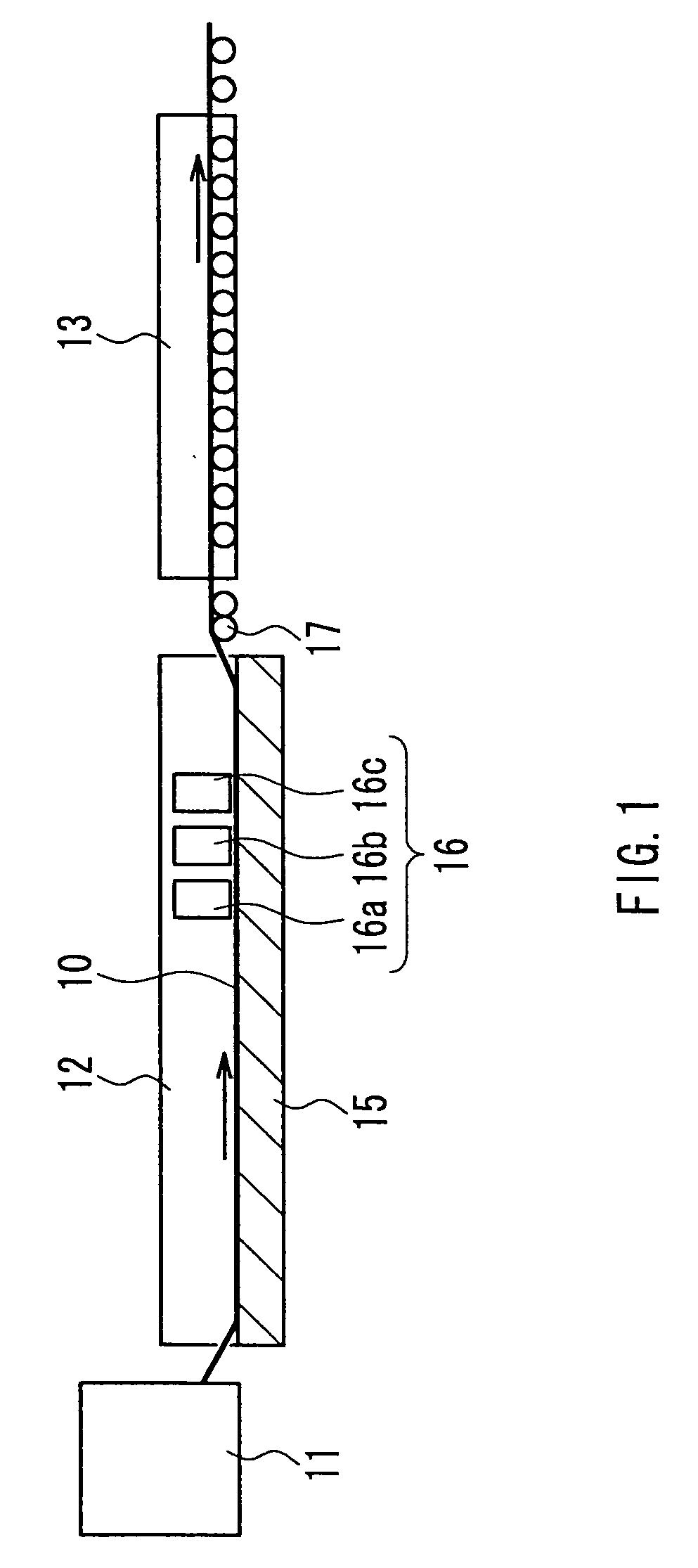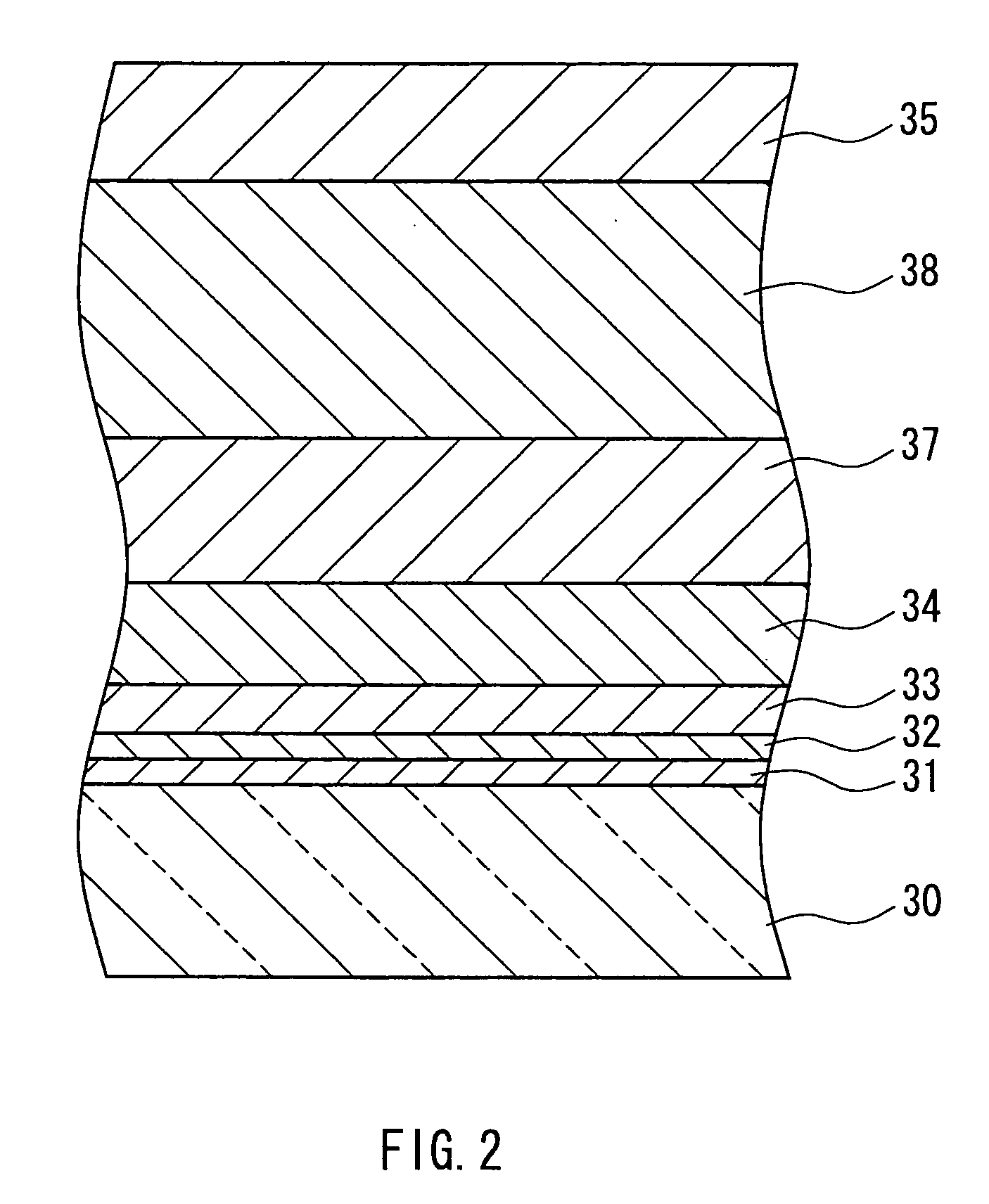Method for forming thin film, substrate having thin film formed by the method, and photoelectric conversion device using the substrate
- Summary
- Abstract
- Description
- Claims
- Application Information
AI Technical Summary
Benefits of technology
Problems solved by technology
Method used
Image
Examples
example 1
[0048] A 1-mm thick aluminosilicate glass sheet cut into a size of 150×150 mm was placed on a mesh belt and passed through a heating furnace to be heated to about 660° C. While transferring the heated glass sheet further, a mixed gas composed of tin tetrachloride (vapor), water vapor, hydrogen chloride, and nitrogen was supplied from a coater installed above the transfer line so as to form, on the glass, a thin film (buffer layer) having a film thickness of 110 nm and composed of tin oxide (SnO2) at a film deposition rate of 2210 nm / min. A plurality of such glasses for which the process was completed up to the buffer layer were prepared. After annealing the glass sheet, it was again placed on the mesh belt and was passed through the heating furnace to be heated to about 660° C. The heated glass sheet was further transferred, and a mixed gas composed of 2.1 mol % tin tetrachloride (vapor), 62.3 mol % water vapor, 0.1 mol % hydrogen chloride, nitrogen, and hydrogen fluoride was suppli...
example 2
[0051] A buffer layer was formed on a glass prepared in a similar manner to Example 1, under the same conditions as those in Example 1. This glass sheet again was placed on the mesh belt and was passed through the heating furnace to be heated to about 660° C. While transferring the heated glass sheet further, a mixed gas composed of 2.6 mol % tin tetrachloride (vapor), 79.9 mol % water vapor, 0.79 mol % hydrogen chloride, nitrogen, and hydrogen fluoride was supplied from a coater installed above the transfer line to form on the buffer layer a transparent conductive film (thin film containing a crystalline metal oxide as the main component) having a film thickness of 1700 nm and composed of fluorine-containing tin oxide (SnO2:F) at a film deposition rate of 11400 nm / min. Hydrogen chloride was supplied by mixing it, in advance, with water vapor that had not yet been mixed with tin tetrachloride. The mole ratio of hydrogen chloride to tin tetrachloride was 0.3. The gap between the coat...
example 3
[0054] A buffer layer was formed on a glass prepared in a similar manner to Example 1, under the same conditions as those in Example 1. This glass sheet was again placed on the mesh belt and was passed through the heating furnace to be heated to about 660° C. While transferring the heated glass sheet further, a mixed gas composed of 2.6 mol % tin tetrachloride (vapor), 80.1 mol % water vapor, 0.53 mol % hydrogen chloride, nitrogen, and hydrogen fluoride was supplied from a coater installed above the transfer line to form on the buffer layer a transparent conductive film (thin film containing a metal oxide as the main component) having a film thickness of 1650 nm and composed of fluorine-containing tin oxide (SnO2:F) at a film deposition rate of 10800 nm / min.
[0055] Hydrogen chloride was supplied by mixing it, in advance, with water vapor that had not yet been mixed with tin tetrachloride. The mole ratio of hydrogen chloride to tin tetrachloride was 0.2. The gap between the coater an...
PUM
| Property | Measurement | Unit |
|---|---|---|
| Speed | aaaaa | aaaaa |
| Deposition rate | aaaaa | aaaaa |
| Molar ratio | aaaaa | aaaaa |
Abstract
Description
Claims
Application Information
 Login to View More
Login to View More - R&D
- Intellectual Property
- Life Sciences
- Materials
- Tech Scout
- Unparalleled Data Quality
- Higher Quality Content
- 60% Fewer Hallucinations
Browse by: Latest US Patents, China's latest patents, Technical Efficacy Thesaurus, Application Domain, Technology Topic, Popular Technical Reports.
© 2025 PatSnap. All rights reserved.Legal|Privacy policy|Modern Slavery Act Transparency Statement|Sitemap|About US| Contact US: help@patsnap.com



